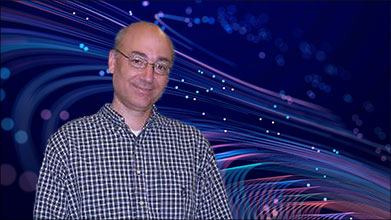Cloud native EDA tools & pre-optimized hardware platforms
The Anticipated Launch of the James Webb Space Telescope
The James Webb Space Telescope is scheduled to launch in October this year. With its astounding resolution of ~0.1 arc-second, covering a spectral range of 0.6 to 28.5 um, it will be able to detect and study faint galaxies in the early universe like no instrument before it. In our own galaxy, it will also be able to penetrate the visibly opaque dust and gas of stellar nurseries and probe the atmosphere of exoplanets.
CODE V's Impact on Modern and Historic Space Missions
We are proud that CODE V has been used for modeling the Webb Space Telescope and for designing several science instruments for the mission’s system team. The CODE V models represent the “configuration controlled” format for the final as-built design, for flight analysis and performance predictions. CODE V was also used for building the test models for the observatory-level testing at NASA’s Johnson Space Center in Houston, Texas.
We have provided software tools and consulting engineering services to NASA for decades. This started in the 1960s, when Optical Research Associates (also known as ORA, and was acquired by Synopsys in 2010) provided designs for the Surveyor cameras (soft landings on the Moon to map out potential Apollo landing sites) and optics for the Apollo missions. ORA also contributed to NASA’s Great Observatories project.
The Legacy and Learnings from the Great Observatories
The Great Observatories project was conceived to include four, large space-borne astronomical observatories covering the electromagnetic spectrum from gamma rays to the infrared. One of the main goals was to be able to study the same object, at the same time, in these different bands.
The four Great Observatories, in order of launch, included: the Hubble Space Telescope, the Compton Gamma Ray Observatory (deorbited in 2000), the Chandra X-ray Observatory, and the Spitzer (thermal IR) Space Telescope. Webb is considered a successor to the Great Observatory instruments. ORA/Synopsys has worked on all of these observatories except for the very short wavelength, Compton Gamma Ray Observatory.

The first great observatory was the Hubble Space Telescope, launched in 1990. As pretty much everyone knows, it had a flaw. The original primary was as perfect a hyperbolic large aperture mirror as could be manufactured, but unfortunately it was the wrong hyperbola (an incorrect conic constant). This was due to a metrology error during fabrication and the result was that the Hubble had significant spherical aberration.
NASA developed a bold plan to fix the Hubble by replacing one instrument completely to include corrective optics (the Wide Field and Planetary Camera 2, or WF/PC 2) and to remove another instrument (the High Speed Photometer) and replace it with the Corrective Optics Space Telescope Axial Replacement (COSTAR), which served to correct the spherical aberration for the three remaining instruments. The corrective optics were installed during the 1st Servicing Mission in 1993 – this was a great success, and restored the Hubble to its full capabilities.
CODE V software and our consulting engineering team played a significant role in the Hubble’s 1st servicing mission. A member of our System Engineering group was part of the team that determined the origin of the original problem. CODE V was used for the designs of both the WF/PC2 camera and COSTAR. Our engineering team was responsible for the design of test optics for the COSTAR. ORA received the prestigious NASA Public Service Group Achievement Award for our contributions to the Hubble 1st Servicing Mission. The award, signed by NASA Administrator Dr. Daniel S. Goldin, is “in recognition of outstanding contributions in the area of optical design and engineering in support of the Jet Propulsion Laboratory and NASA’s space exploration missions.”
Engineering Challenges and Triumphs: The Chandra and Spitzer Observatories
The Chandra X-ray observatory was put on-station in 1999. It was the 3rd Great Observatory after the launch of the Compton Gamma Ray Observatory in 1991. The Chandra’s mission was to observe highly energetic objects such as quasars, the extremely hot gases orbiting black holes, and other very high-energy astronomical phenomena. It utilizes a grazing-incidence Cassegrain telescope to collect the light and achieved resolutions 25x better than any prior X-ray telescope.
Putting a complex system consisting of precision optics/mechanics/electronics into space is difficult. While problems are not always as big (and public) as the flaw in the original Hubble mirror, engineers must predict potential failures, test systems, and often troubleshoot problems. For the Chandra, one of the four primary science instruments is the Advanced CCD Imaging Spectrometer (ACIS). Components of this system needed to be launched in vacuum, so a tightly sealed door and venting sub-system were implemented in the design. After many successful pre-flight tests to open and close the door, it failed to open during a final pre-flight, thermal-vacuum test. Time to launch was short, and ORA’s Systems Engineering Team, along with the primary contractor and NASA, worked successfully to troubleshoot and fix the problem.1
The Spitzer Space Telescope was designed to observe the infrared between about 3-180 um. Like Webb, Spitzer can detect cooler objects (smaller stars and exoplanets) and see through dust and gas to explore areas not visible to the Hubble. Our engineering team had a role in helping troubleshoot the Spitzer system. While the science goals of Spitzer had some overlap with the goals for Webb, the Spitzer aperture was 0.85-meters vs. the Webb aperture of 6.5-meters. The Spitzer was decommissioned last year.
Synopsys and Future Space Endeavors
It has been our privilege to contribute to NASA’s James Webb Space Telescope and Great Observatories project. In future posts, we’ll highlight other Synopsys contributions to NASA projects. Stay tuned!
- Mark A. Kahan, Neil L. Tice, William A. Podgorski, Paul P. Plucinsky, Keith B. Doyle, “ACIS door failure investigation: technical details and mitigation procedures,” Proc. SPIE 4198, Optomechanical Engineering 2000, (6 March 2001); doi: 10.1117/12.417341









